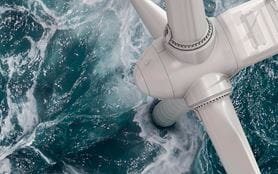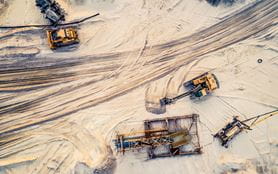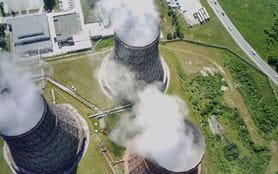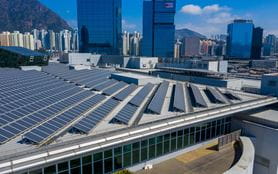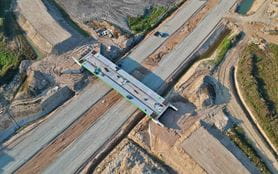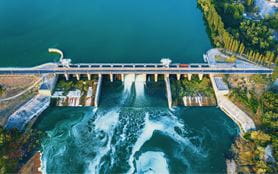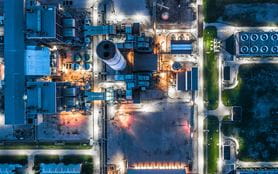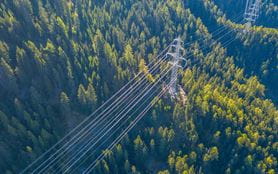Decarbonising transportation requires collaboration and regulatory reform
Related people
Headlines in this article
Getting to Net Zero shipping and aviation is a complex challenge. However industry collaboration, innovation, new regulations and pressure from customers are helping to accelerate progress.
Transportation accounts for around one-fifth of global CO2 output, with shipping and aviation responsible for 20% of the total. Finding a way to decarbonise these sectors is therefore critical to deliver Net Zero, although the barriers to doing so are considerably higher than for other forms of mobility.
Like many aspects of the energy transition, the obstacles are both technological and financial.
Firstly, the systems needed to decarbonise aircraft and ocean-going vessels are still in development. While green hydrogen offers massive potential as a zero-carbon fuel source, building the supply chain required to serve the sector globally will take many years.
Taking shipping as an example, vessels in service today will be in operation for decades – some beyond 2050. To reduce emissions in the near term, shipping is therefore having to transition through dual-fuel power (a combination of oil and liquefied natural gas), raising the financial challenge of retrofitting existing vessels while investing in new Net Zero infrastructure and fleet.
International carbon price needed to support transition
Sustainable, lower-emission biofuels can be used as a direct substitute for – or ‘dropped in’ to - traditional heavy-fuel oils, but until an international price for carbon is established they are significantly more expensive than existing products (and as we explore here, a robust global carbon market is a long way off).
To reduce emissions in the near term, shipping is having to transition through dual-fuel power, raising the challenge of retrofitting existing vessels while investing in new infrastructure.
Only a handful of the largest players have the resources to develop the land-side systems required to serve ships with hydrogen-derived fuels, making cross-industry collaboration essential.
Just as we are seeing with carbon capture and storage, clear demand signals are required to create the necessary supply in the absence of vertically integrated supply chains.
Shipping and aviation industries collaborate across the supply chain
The good news is that this is happening, with shipowners and the cargo industry working together to commit to using a certain proportion of green hydrogen in future.
“Green corridors” that support zero-emission shipping are also emerging between major cargo hubs, although it is a much bigger challenge to extend them to the multitude of smaller ports that underpin the movement of goods around the world.
Similar dynamics are at play in aviation, where sustainable biofuels are also being deployed as transition technologies.
Airlines and aircraft manufacturers are investing (often through their own corporate VC funds) in innovations such as battery-, hybrid- and hydrogen-powered flight and are collaborating (often through the same forums as their counterparts in shipping) to foster the development of zero-emissions supply chains.
However, aviation faces an added challenge in that international air travel often involves aircraft covering long distances between refuelling stops. Clean power technologies such as batteries are heavier than the fossil fuel systems they replace, creating significant efficiency trade-offs.
Aviation faces an added challenge in that clean power technologies such as batteries are heavier than the systems they replace, creating significant efficiency trade-offs.
As a result, they are largely only viable in lighter aircraft that serve shorter routes, driving some manufacturers to fund the development of mitigating innovations such as direct air carbon capture and storage.
EU set to include shipping in Emissions Trading Scheme
From a regulatory perspective, emissions from international transportation are not included in countries’ nationally determined contributions (NDCs) under the Paris Agreement.
Regulatory pressure is still being brought to bear (the EU’s economy-wide Net Zero strategy, which covers all industries, is just one example) but to date, aviation and shipping have not faced the sort of global policy focus that has been applied to, say, cars.
Looking ahead, shipping is set to be included in the EU’s Emission Trading Scheme (meaning carbon permits will be required for voyages in EU waters), while the International Maritime Organisation – the UN body that regulates shipping – has pledged that by 2050 the industry’s emissions will be half their 2008 levels.
ICAO releases breakthrough Net Zero goal
In October 2022 there was a breakthrough in aviation, with the International Civil Aviation Organisation (ICAO, another UN body, although one established to encourage cooperation between countries rather than regulate the industry) announcing an “aspirational” Net Zero goal by 2050. The plan was accepted by all 193 ICAO member nations (although critics again point to carbon pricing as the missing piece of the puzzle).
Lenders are providing a further incentive to accelerate decarbonisation, with their increasingly stringent ESG criteria encouraging the industry to improve its environmental performance. The focus on Scope III emissions is also leading cargo operators to demand more from their transportation partners.
These drivers – along with financial backing from governments and regulatory reforms – will encourage more private investment in clean fuel production and next-generation technologies, in turn helping to create economies of scale that will lower costs. The question, though, is whether this will happen fast enough to keep pace with global Net Zero pathways.





